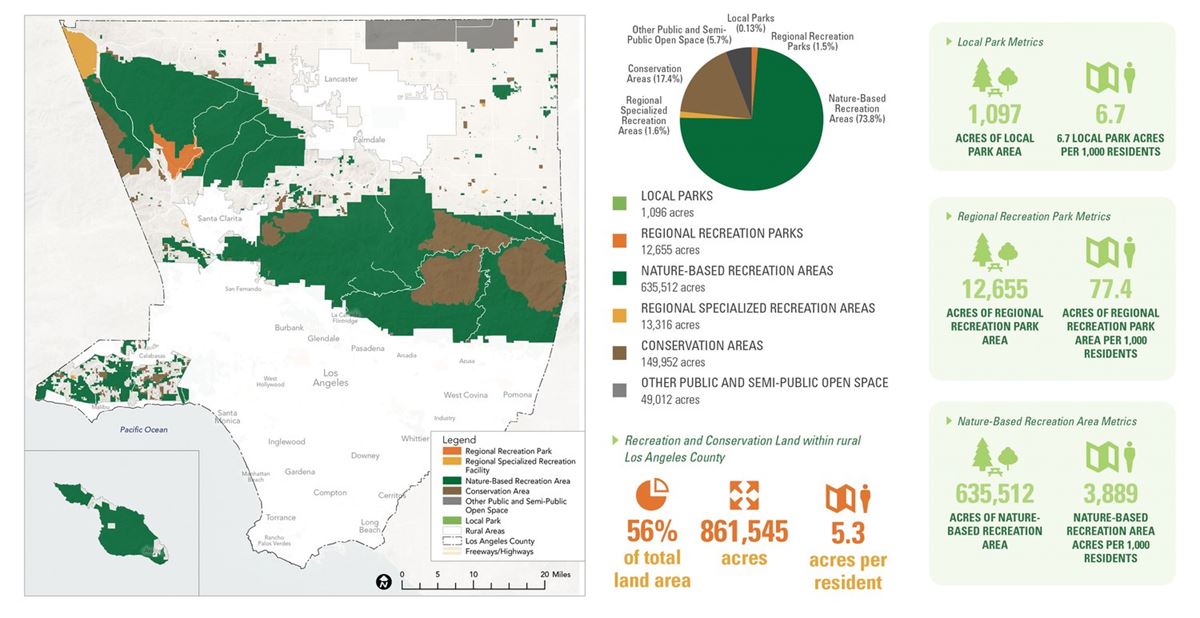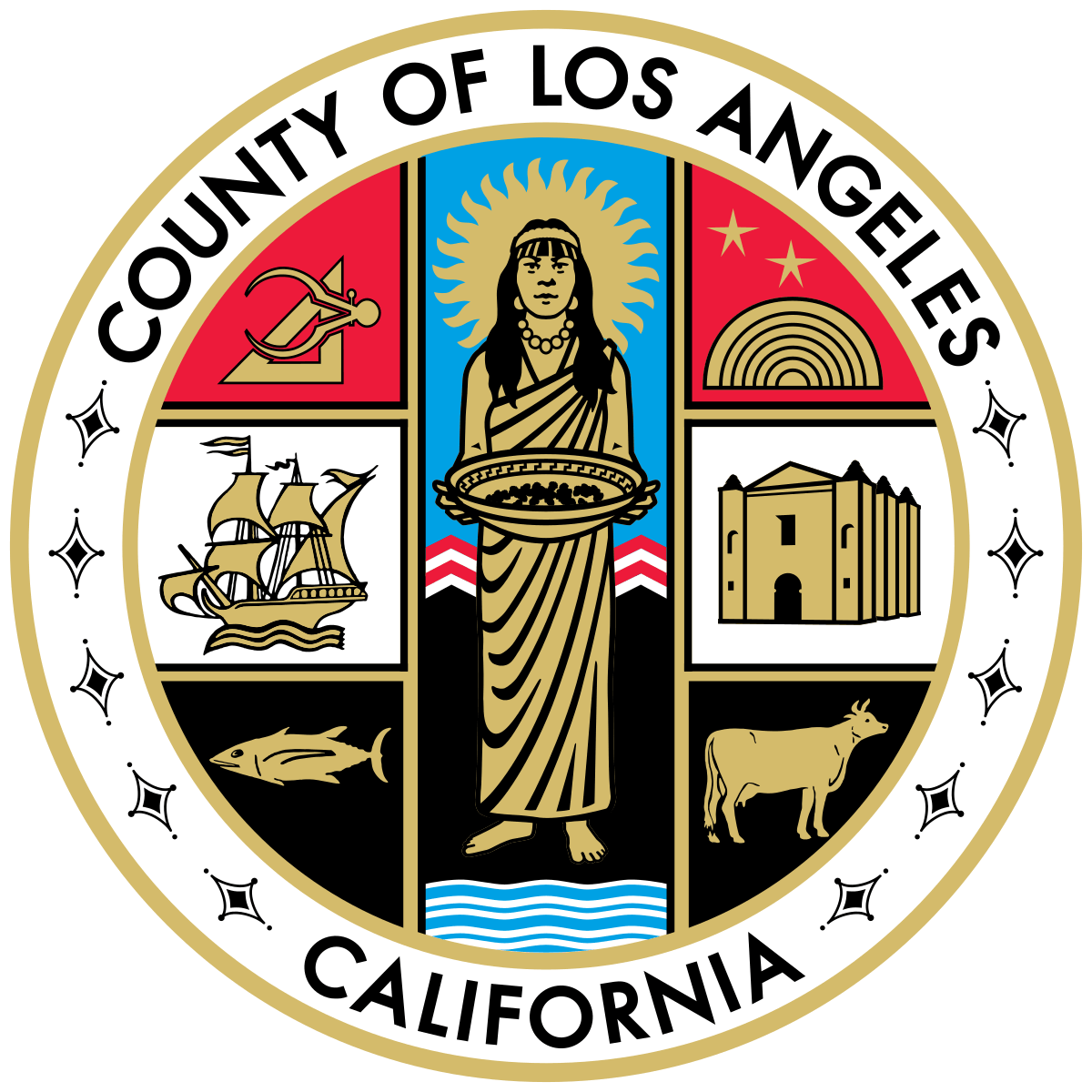
Identifying Rural Park & Recreation Needs
There are no cookie-cutter answers to understanding and meeting residents’ needs.
October 24, 2022, 10:00 AM PDT
By Clement Lau
Photos: Los Angeles County Department of Parks and Recreation; MIG
What are the unique needs of rural areas, and how do park and recreation departments best address them? Agencies like the Los Angeles County Department of Parks and Recreation (DPR) have been seeking answers to these questions. Specifically, DPR has gathered input regarding park-planning efforts from residents in rural communities across the county.
Regional And Rural Edition
One of the planning projects is the 2022 Parks Needs Assessment Plus (PNA+), previously called the Regional and Rural Edition, which is an update to the 2016 Los Angeles Countywide Parks and Recreation Needs Assessment (PNA). This new study, building on the PNA, provides a more in-depth and nuanced understanding of park needs. To address a motion passed by the L.A. County Board of Supervisors in 2019, the PNA+ comprehensively identifies, analyzes, maps, and documents regional facilities and the park needs of rural communities.
Defining Rural Areas
Rural land accounts for about 56 percent of the area of the unincorporated portion of L.A. County. As part of the PNA+, 14 rural study areas were established following an analysis of the PNA study area boundaries, the location and distribution of rural lands, and various planning and zoning documents. These rural areas vary in their demographics, location, topography, history, and park and recreation needs and preferences. As shown in Figure 1, rural communities are found in the Antelope Valley, Santa Clarita Valley, Santa Monica Mountains, and Santa Catalina Island.
Understanding Rural Park Needs
The PNA+ reveals that rural areas of the county are home to a significant amount of parkland, including about 1,100 acres of local parks, 12,700 acres of regional recreation parks, and 636,000 acres of nature-based recreation areas. As part of the PNA+, input was collected from rural residents via various methods, including key stakeholder interviews, surveys, public workshops, tabling at community events, social media, and meetings with town councils, which are formed specifically to represent the interests of unincorporated rural communities. Effort also was made to coordinate with staff members from the Board of Supervisors offices and various friends of park groups and community-based organizations.
While rural areas are rich in parkland, they still have unmet park and recreation needs. For example, residents in the Antelope Valley reported they are lacking water-based recreation facilities such as swimming pools and splash pads, shaded seating and play areas, and trails. Also, many of the existing local parks are old and have deferred maintenance and improvement needs. Similar needs exist for local residents on Santa Catalina Island, a popular tourist destination. In addition, residents in the Santa Monica Mountains expressed the urgent need to acquire open space and natural areas to preserve habitats, protect watersheds, and facilitate wildlife movement.
Measuring Rural Park Access
Park access is often measured in the percentage of residents living within a half-mile or 10-minute walk of a park. While this metric makes sense in urban areas, it is less applicable in rural areas where residents are less able or less likely to walk to a park due to the sprawling nature of rural areas, safety issues associated with the lack of pedestrian infrastructure (sidewalks, street trees, etc.), hostile weather conditions (excessive heat, strong winds, etc.), and other factors. On average, only 19 percent of rural residents in L.A. County live within a half-mile walk of a recreation site. In comparison, the 2016 PNA reported that 49 percent of residents countywide lived within a half-mile walk of a local park.
Thus, in addition to walkability, the PNA+ also examines park access via other modes, including driving, bicycling, and taking public transit. About 90 percent of rural residents live within a five-mile drive of a recreation site. However, there are communities along the northern county line in the Antelope Valley and in the western reaches of the Santa Clarita Valley that are located beyond 10 miles from any rural recreation site. These residents overwhelmingly lack public-transit access to recreation sites.
Meeting Rural Park Needs And Improving Access
There are many ways to address rural park needs and improve park access:
- Provide transportation to regional and rural recreation sites. Examples of services that can be expanded to address this need include the Beach Bus, which takes inland residents to beaches during the summer and on-request micro-transit, which connects rural communities to important destinations like parks and libraries.
- Develop new parks. For example, DPR is pursuing funding to develop a 3-acre park in the community of Littlerock. Proposed park amenities include a restroom building, shaded picnic areas, children’s play areas, an equestrian pen with tie-ups and water, a shaded fitness area, art/interpretive elements, picnic tables, bike racks, a gazebo, and porch swings.
- Improve and expand existing parks. DPR has also developed a conceptual plan to expand the 9-acre Jackie Robinson Park in Sun Village. The proposal includes the construction of a new splash pad, a community stage, a multi-purpose sports field, new walking paths, picnic tables, a new restroom, a new parking lot, new solar lighting, and drought-tolerant landscaping.
- Replace destroyed or damaged recreational facilities. DPR is working on plans to replace the nature center at Devil’s Punchbowl, a popular destination for locals and visitors, and a unique 1,310-acre geological wonder that suffered extensive damage during the 2020 Bobcat Fire. DPR will incorporate fire-resilient architecture and best practices for building design, including the use of noncombustible materials for the building’s exterior. Additionally, the new nature center will include interpretive and educational materials about fire safety, defensible space, fire ecology, and other related topics.
- Acquire open space. It is also important to acquire open-space parcels for conservation. A recent example is the Mountains Recreation and Conservation Authority (MRCA) acquisition of the final 150 acres of the 325-acre Triangle Ranch open space in the Santa Monica Mountains. The area has long been identified as a crucial linkage for habitat preservation, watershed protection, and wildlife movement.
Clement Lau, FAICP, DPPD, is a Departmental Facilities Planner with the Los Angeles County Department of Parks and Recreation.
